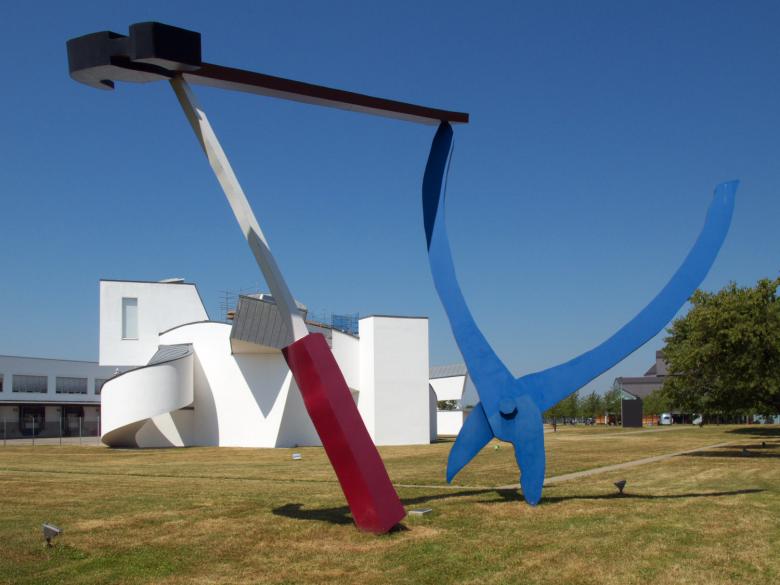Claes Oldenburg (1929–2022)
The famed artist known for oversized sculptures of everyday objects, many carried out with his wife Coosje van Bruggen (1942–2009), died on July 18 at the age of 93.
Claes Oldenburg was one of those artists that architects love, up there with Richard Serra, James Turrell, and Dan Graham. Yet unlike those artists, whose creations are spatial, immersive, and made with elements that could be described as architectural, Oldenburg's figurative sculptures find their appeal through their gigantic scale and how they relate to their natural and urban contexts.
An early and obviously unbuilt project from 1966 found the artist proposing the giant Wing-Nut Monument for Stockholm; as published in the 1969 book Fantastic Architecture, the wing-nut would have moved up and down its screw shaft.
One year later, in 1967 at the Metropolitan Museum of Art, Oldenburg realized his first outdoor public monument: Placid Civic Monument, a performance piece and artwork that consisted of a 6-by-3-foot rectangular hole in the ground dug and filled by gravediggers as part of New York City's Sculpture in Environment exhibition.
Lipstick (Ascending) on Caterpillar Tracks, installed at Yale University in 1969 (first in vinyl but then, in 1974, in steel), was Oldenburg's first large-scale sculpture, basically establishing the format that would continue for the rest of his life and that of Coosje van Bruggen, whom he married in 1977. That year Oldenburg realized the nearly 100-foot-tall Batcolumn in Chicago. From 1981 onwards, the sculptures were signed both Claes Oldenburg and Coosje van Bruggen.
Oldenburg and Van Bruggen were commissioned by the children of Willi Fehlbaum, founder of the furniture company Vitra, to create Balancing Tools for their father's 70th birthday in 1984. The piece depicting a hammer, pliers, and screwdriver — the tools employed by upholsterers, appropriately — in perfect balance, was joined five years later by the adjacent Vitra Design Museum designed by Frank Gehry. (The museum, as in the top photo, often serves as a backdrop to the older sculpture.)
Starting in 1985 the artists and architect would work together on the Chiat/Day Building in Venice, California, where Oldenburg and Van Bruggen stole the show with a giant pair of binoculars serving as the main entrance for the office building. Completed in 1991, the interior of Binoculars was given over for small conference areas capped by round skylights.
There are numerous other notable commissions by Oldenburg and Van Bruggen — too many to mention — but a favorite of this writer is Shuttlecocks, installed on the grounds of the Nelson-Atkins Museum of Art in Kansas City, Missouri, in 1994. The artists imagined the neoclassical building as a net, with 17-foot-tall badminton birdies strewn across the lawns on both sides of the museum. Controversial at first, Shuttlecocks is beloved by residents of the Midwestern city and now serves as the symbol for the nearly 90-year-old museum.



